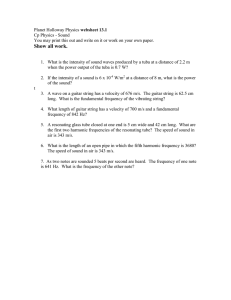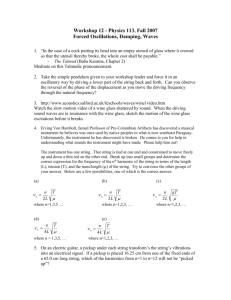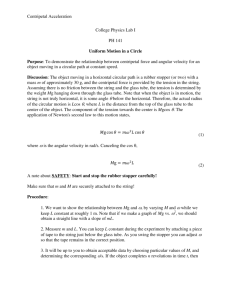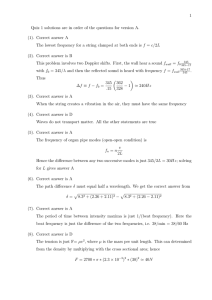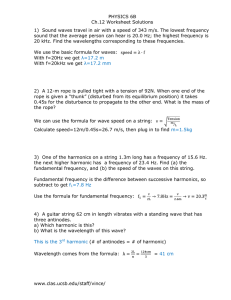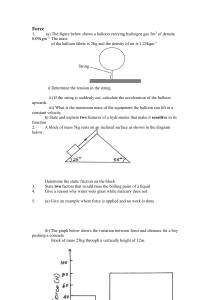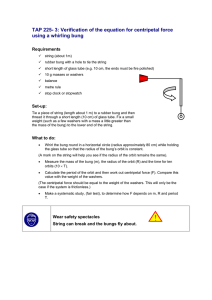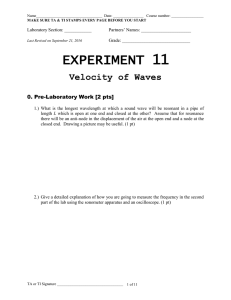Phy 133 - Assignment 2
advertisement
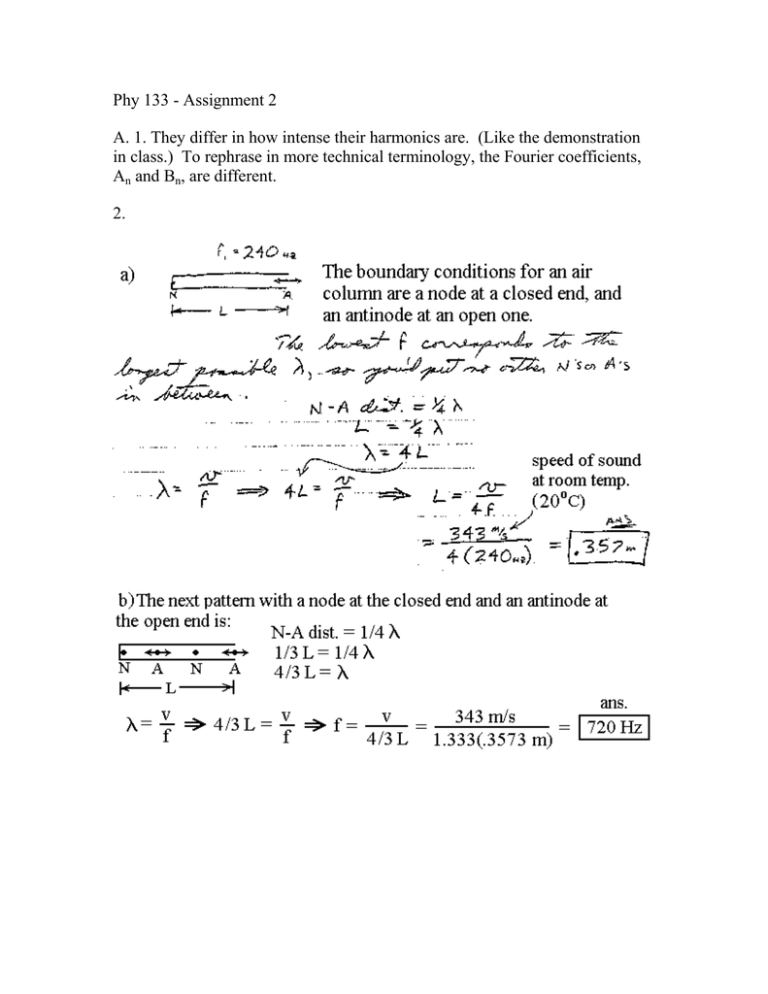
Phy 133 - Assignment 2 A. 1. They differ in how intense their harmonics are. (Like the demonstration in class.) To rephrase in more technical terminology, the Fourier coefficients, An and Bn, are different. 2. B. 1. It changes the length of the resonating air column, which changes the wavelength which changes the frequency. 2. C. D. E. 1. Resonance causes a standing wave to form on the glass, if the pitch of the singing matches a resonant frequency of the glass. (The glass gets pushed back and forth by the vibrating air touching it.) If it’s particularly fragile glass, it can’t take flexing back and forth like that. 2. (f = frequency, F = force.) a. b. The beat frequency is the difference between the two strings’ frequencies. The one string is still at 110 Hz. The frequency of the other is Beat frequency = 110 – 104.36 = 5.64 Hz F. 1. . If you sound the string and tuning fork at the same time, you hear beats as the two sounds interfere. Adjust the string tension until the beats stop; the string’s frequency is now the same as the fork’s because fb = f1- f2. 2. a. If four segments are 120 cm long, each one is 120/4 = 30 cm long. That is, node to node is 30 cm. Since N to N = ½, = 60 cm. b. There are a couple of ways to do this, but the quickest is to say that if the fourth harmonic is 120 Hz, the first harmonic would be 120/4 = 30 Hz. (That is, if fn = nf1, then 120 = 4f1. Solve for f1.)
